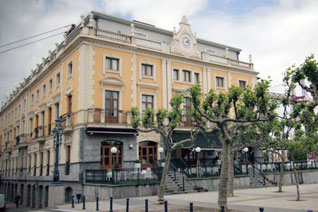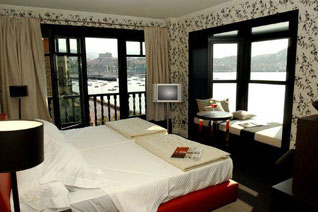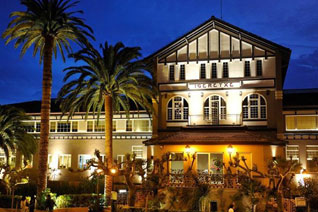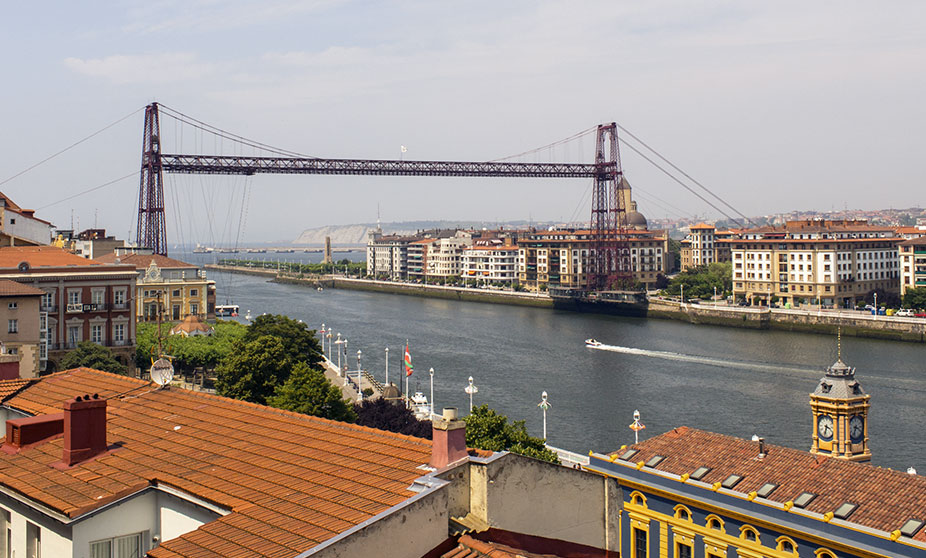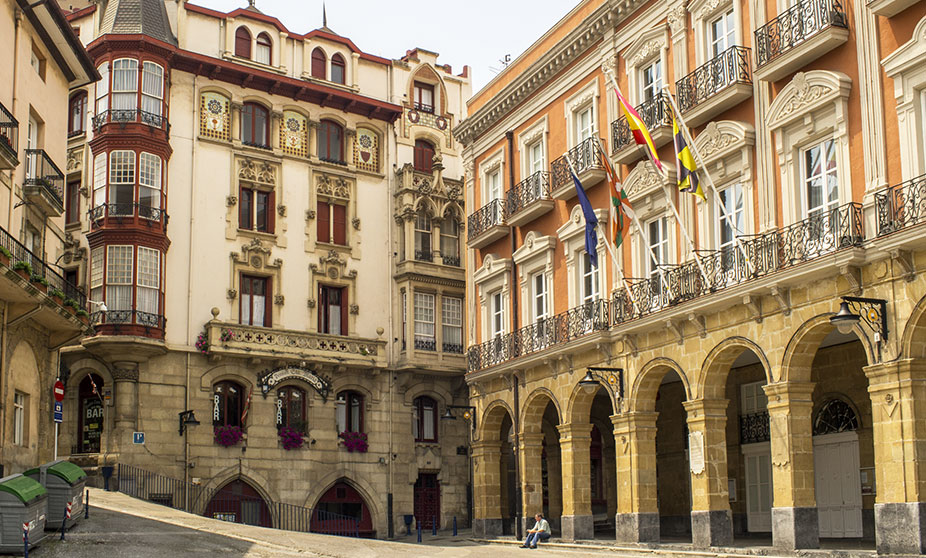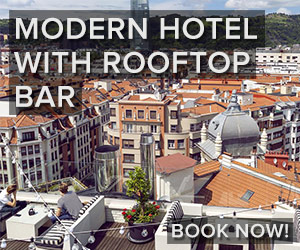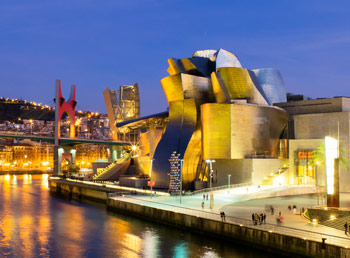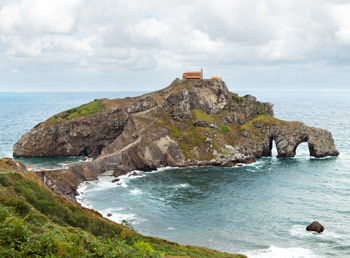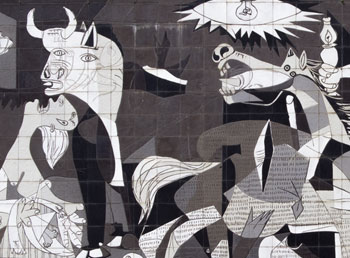We have put together a hand selected list of the most important things to do and see in Getxo. Everything from the Path of the Grand Villes to visiting the Old Port of Algorta – if it deals with Getxo tourism, we’ve got you covered.
2
![Arriluze Palace - Path of the Grand Villes Arriluze Palace, Getxo]()
Arriluze Palace - Path of the Grand Villes
Getxo is located on the right bank of the Nervión River by  the Hanging Bridge, which has traditionally been considered the “posh” side of the river. The town is characterized by its large houses and mansions, built by the local bourgeoise in the Arenas neighborhood primarily during industrialization (end of the 19th & beginning of the 20th century).
the Hanging Bridge, which has traditionally been considered the “posh” side of the river. The town is characterized by its large houses and mansions, built by the local bourgeoise in the Arenas neighborhood primarily during industrialization (end of the 19th & beginning of the 20th century).
Due to its location right next to the ocean, this was a great place for the wealthy to escape the pollution and bustle of Bilbao.
The “Path of the Grand Villes” (“Camino de las Grandes Villas” in Spanish) is a great camino to walk along and discover Getxo. It starts at the Vizcaya Bridge, traveling along the river and around the bay until it reaches the  marina of Getxo. The name of the path comes from a section of it that passes in front of some beautiful mansions (the grand villes) that are perched on a hill, overlooking the water.
marina of Getxo. The name of the path comes from a section of it that passes in front of some beautiful mansions (the grand villes) that are perched on a hill, overlooking the water.
Each of these grand villes is magnificent and at the same time unique. Two of the best examples are the Arriluze Palace and the Aitzgoyen Mansion. The Arriluze Palace was designed in a medieval revivalist style with a British touch, made entirely of dressed (cut) stone and features two asymmetrical corner turrets.
Next to it is the Aitzgoyen Mansion which was built in popular neo-basque style. This was the first large building project designed by Manuel María Smith in 1909. María Smith later went on to design some of the most important buildings in the Basque Country such as the Hotel Carlton in Bilbao’s Moyua Square.
3
![Marina El Abra – Getxo Marina El Abra]()
Marina El Abra
![Restaurants at the Marina El Abra Restaurants at the Marina El Abra]()
Restaurants at the Marina El Abra
Inaugurated in 1998, the Marina El Abra was the first marina (“Puerto Deportivo” in Spanish) to be opened in the entire Spanish Basque Country. It is a fully functioning marina with everything needed to repair and maintain ships, but in addition, it also boasts a nice recreational area and a path that stretches along the water. The path offers beautiful views overlooking the ships in the port and the mountains on the other side of the bay.
Once you are in the marina, the atmosphere is quiet and relaxed and it seems that you are far away from the city. They have done a good job orientating the marina complex to hide the industrial sites located in the other side of the river.
At the marina there is also a food court which is divided in two. The main building is dedicated to fast food while the following buildings houses various restaurants, cafés and bars. All of the establishments on the waterfront offer large terraces that allow visitors to sit outside and enjoy the beautiful views.
4
![Overview of the Old Port of Algorta Overview of the Old Port of Algorta]()
Overview of the Old Port of Algorta
![Bar at the Old Port of Algorta Bar at the Old Port of Algorta]()
Bar at the Old Port of Algorta
![Narrow street in the Old Port of Algorta Narrow street in the Old Port of Algorta]()
Narrow street in the Old Port of Algorta
Due to its location on the bay, next to the Nervion River, the neighborhood of Algorta has experienced a long maritime tradition. Apart from fishing, the men from Algorta were famous for being professional sailors who knew how to navigate ships into the bay and further into the river.
This was always a difficult task because of the many sand banks that form under the water. Their service was crucial for large ships on their way to Bilbao.
The Old Port of Algorta is the area where these sailors lived. Although the sailors have all but disappeared, the maritime atmosphere is still alive today. The old port is formed by narrow and steep streets, full of small white houses which make it a charming neighborhood to stroll through.
Somehow, it feels far away from the industrial sites that stand on the other side of the river and makes visitors feel as though they are in a small village. It is also place where people know each other – groups of old men wearing the typical Basque beret (“boina”) sit in the shade chatting to one another, while women hang clothes outside of their windows, talking to the neighbors that pass by.
The Old Port of Algorta is frequented by both locals and visitors alike who come to relax at one of the numerous bars and restaurants. The stairway leading up to the village is also a favorite spot for locals when the sun is setting and a great place to unwind.
6
![Ereaga Beach – Getxo Ereaga Beach]()
Ereaga Beach
Getxo is also popular because of it has several beaches: las Arenas, Ereaga, Arrigunaga, Gorrondatxe-Azkorri and Barinatxe-La Salvaje. All of them are fairly easy to reach by public transport which makes them very popular among the Bilbainos. All of the beaches in Getxo have lifeguards, restrooms and showers.
The first two beaches (las Arenas and Ereaga) are considered to be urban beaches and are within walking distance from the Vizcaya Bridge. While Las Arenas Beach is smaller (240 m), Ereaga Beach (880 m) offers space for practicing sports such as canoeing, volleyball, soccer, etc.
Located between two cliffs, the beach of Gorrondatxe-Azkorri is Getxo’s quietest beach since it is the most difficult to access. This beach has been awarded with a blue flag by the Foundation for Environmental Education due to the quality of its waters and the natural environment that surrounds it.
If you are interested in surfing, then check out the beaches of Gorrondatxe-Azkorri and Barinatxe-La Salvaje.
7
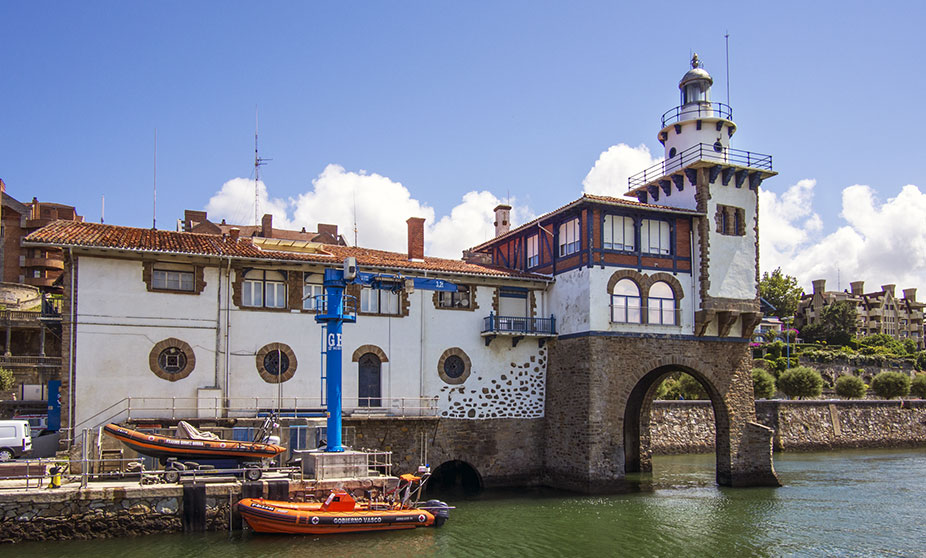
Rescue Station for shipwrecked people “Casa de Náufragos”
Throughout the centuries, the stretches of sand that formed underneath the water have proven to be dangerous for incoming ships on their way to Bilbao. The sailors from Getxo and Portugalete were experts in navigating the incoming ships into the port, so much so that they even made a profession out of it.
These “lemanes” as they were called, made the way for ships possible, however, even with their expertise, wrecks did still occur.
Getxo was responsible for helping those involved in wrecks and, for that reason, the Casa de Náufragos rescue station was created. The lighthouse and rescue station were built in 1920 by Ignacio María Smith in neo-basque style. The building stands on top of the rocks of the dock, at the end of the  “Path of the Grand Villes,” right before the
“Path of the Grand Villes,” right before the  Ereaga Beach. Today it is managed by the Red Cross.
Ereaga Beach. Today it is managed by the Red Cross.
![]() Vizcaya Bridge, or Puente Colgante (“Hanging Bridge”) as it is most commonly referred to, is one of the most unique bridges in the world. In the late 1800’s, when this transporter bridge was constructed, the city of Bilbao was going through a period of growth that was fueled mainly by ship building and the mining industry.
Vizcaya Bridge, or Puente Colgante (“Hanging Bridge”) as it is most commonly referred to, is one of the most unique bridges in the world. In the late 1800’s, when this transporter bridge was constructed, the city of Bilbao was going through a period of growth that was fueled mainly by ship building and the mining industry.
